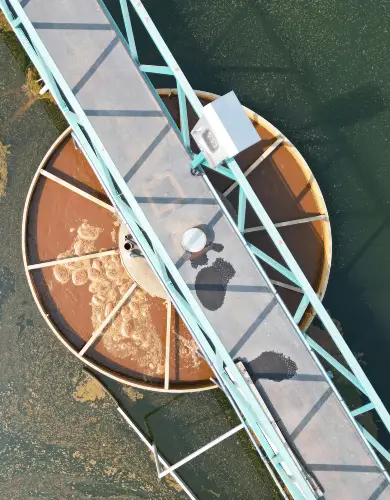Emissions Trading Scheme (ETS)
The climate emergency is upon us, and as countries are beginning to respond accordingly, Emissions Trading Schemes are becoming the centre of attention.
And for businesses in the UK, understanding what an ETS is and what is covered in the UK ETS is essential to keep up to date with environmental regulations.
What is an Emissions Trading Scheme (ETS)?
An emissions trading scheme is an economic mechanism that uses the ‘cap and trade’ principle to reduce a country’s greenhouse gas emissions according to its international targets.
How does an Emissions Trading Scheme (ETS) work?
Since there is a maximum amount a country can emit per year to reach its targets (this amount decreases yearly to achieve net-zero by 2050), a yearly emissions ‘cap’ is known.
This ‘cap’ is split between the different emitting sectors, such as aviation and industrial installations (e.g. manufacturing, waste incineration).
Companies that reduce their emissions to below their ‘allowance’ can sell this surplus carbon to other businesses who were unable to do so, creating a carbon market for businesses within that ETS.
This incentivises companies to reduce their emissions without completely breaking those industries with inherent difficulties (be it technical, financial, or structural).
The result is accelerated adoption and innovation in green energy.
This youtube explainer is really good to grasp the main idea.
What is the UK Emissions Trading Scheme (UK ETS)?
The UK Emissions Trading Scheme is the UK’s very own system for UK-based businesses to achieve carbon neutrality by 2050.
Businesses eligible for the scheme are legally required to register and participate in the ‘allowance’ auctions to get their emissions permits (their ‘cap’). One allowance is equivalent to one ton of carbon or equivalent (tCO2)
At the end of the year, depending on their emissions balance, registered companies may sell their surplus emissions or buy carbon if they didn’t meet their cap.
The UK ETS encompasses energy-intensive industries and the power generation and aviation sectors.
See the complete UK ETS Scheme Order for the details.
Why do we need an ETS?
The UK Climate Change Act makes it legally binding for the UK to reach net-zero greenhouse gas emissions by 2050.
The UK may use a variety of tools to achieve this ambitious goal, each with its advantages and disadvantages. Alternatives to the ETS include the Climate Change Levy, Energy Company Obligations and Fuel Duty tax.
However, the ETS is unique in the sense that it takes advantage of free-market economics to reduce emissions. Emissions Trading Schemes are considered a principal mechanism to curb emissions by the UN.
The UK was a big player in the design of the European Union Emissions Trading Scheme (EU ETS), but migrated to its own system on 1 January 2021, following Brexit.
Who needs to comply with the UK ETS?
Installations: Any UK installation that has combustion units with a total rated thermal input exceeding 20MW must comply with the UK ETS, except those wih the primary purpose of incinerating hazardous or municipal waste.
Aviation: Aviation is a complex industry to include because the headquarters of flight operators are often different to the origin and destination of flights. The flights covered by the UK ETS include:
- UK domestic flights.
- Flights between the UK and Gibraltar.
- Flights departing the UK to European Economic Area states are conducted by all included aircraft operators, regardless of nationality.
Other: There are simplified criteria for smaller emitters and hospitals, which are covered under this government guidance.
Emissions Trading Scheme (ETS) advantages and disadvantages
No system is perfect, and the ETS certainly isn’t. Below we give you some of the advantages and disadvantages specific to the UK ETS:
Advantages
- Avoids using taxation as a means of emissions reduction.
- Drives innovation through financial incentives, with increased use of renewable business energy.
- Allows industries with particularly difficult emission reduction challenges to continue operating.
- Companies that need to compete internationally in difficult industries may be given free allowances, such as those given to Tata and British Steel in 2021.
- A cost-effective way of reducing emissions.
Disadvantages
- Does not apply to all sectors, like Agriculture.
- Only between 30% and 40% of UK emissions are considered in the UK ETS.
- Granting free allowances may defeat the point of having a ‘carbon market’.
- Being a ‘fork’ or the EU ETS, the UK system is not yet fully ‘battle-tested’.
- Ignores other environmental concerns, such as water mismanagement and biodiversity decline.
FAQs – Emissions Trading Scheme
Is the Emissions Trading Scheme working?
Since the UK ETS is just over a year old, there is yet not enough evidence to see if it’s working, but generally positive conclusions have been drawn for the EU ETS, which is the largest in the world.
The London School of Economics indicated there has been limited evidence for negative economic impacts of the EU ETS, with emissions effectively being reduced in the EU between 2005 and 2020.
Also, research suggests that the ETS system has driven innovation in low-carbon technologies.
Why is it not called the Carbon Emissions Trading Scheme (CETS)?
Although Carbon Dioxide accounts for around three-quarters of anthropogenic (man-made) greenhouse gas emissions.
Gasses such as Methane (15%), Nitrous Oxide (8%) and Fluorinated Gases (1%) are also involved.
This means that referring to it simply as ‘Carbon’ would not be appropriate.
Using an Emission Trading Scheme for other purposes?
Being a free market-based solution, there has been discussion within niche climate expert circles for other kinds of ‘Trading Schemes’ to solve other global issues.
For example, introducing ‘biodiversity damage’, or ‘water usage’ caps for certain industries within the UK such as agriculture.
Do Northern Ireland businesses need to comply with the UK Emission Trading Scheme?
Yes, Northern Ireland businesses must comply, with the exception of electricity generation facilities that must remain in the EU ETS under the Ireland/Northern Ireland Protocol.

